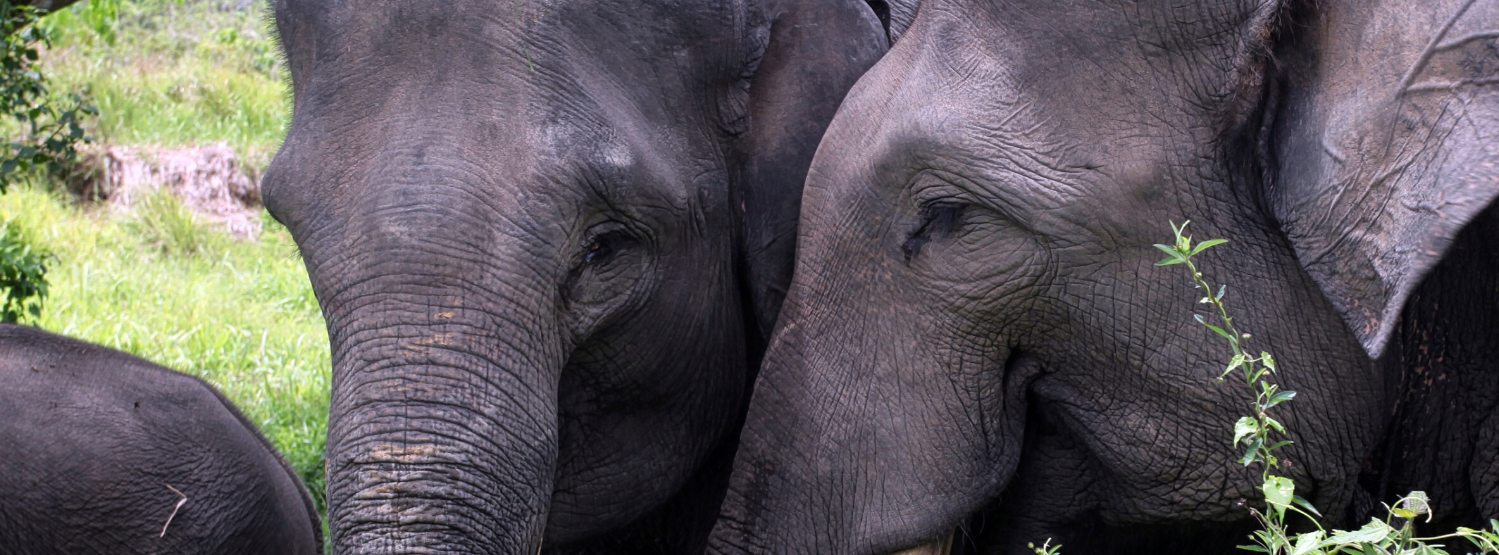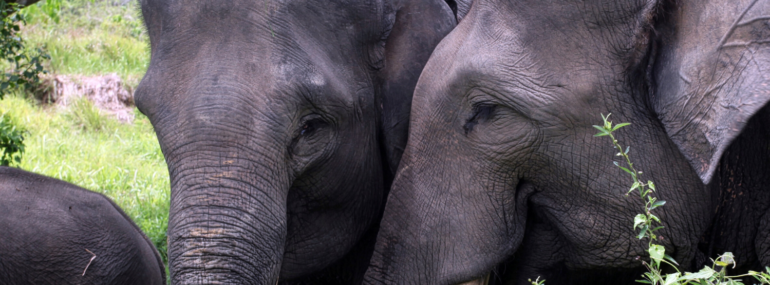Omanyano ovanhu koikundaneki yomalungula kashili paveta, Commisiner Sakaria takunghilile
Veronika Haulenga
Omanyano ovanhu koikundaneki yomalungula kashili paveta, Commisiner Sakaria takunghilile
Veronika Haulenga
Listeners:
Top listeners:
-
play_arrow
Omanyano ovanhu koikundaneki yomalungula kashili paveta, Commisiner Sakaria takunghilile Veronika Haulenga
Analysis: Michelin’s no-deforestation claims in Indonesia rubber plantation a stretch


- Rubber manufacturer Michelin claims to have avoided millions of tons of carbon emissions and saved thousands of hectares of primary forest in a sustainable rubber plantation project in Indonesia.
- Michelin joined the project in 2014 after buying a stake in the Indonesian rubber company RLU, which in 2018 raised $95 million in green bonds. In 2022, Michelin became RLU’s sole shareholder, and repaid the green bonds raised by the project.
- Reporting by independent media outlet Voxeurop, published in 2022, revealed that deforestation in the RLU concession surged immediately before the company made no-deforestation commitments in 2015, resulting in the loss of critical wildlife habitat.
- In this analysis, Voxeurop reporter Stefano Valentino looks at what has happened with the project since Michelin made its no-deforestation commitments, finding ongoing loss of forest within the company’s concessions.
Analysis by Stefano Valentino, via Mongabay
In its sustainability policy, Michelin, the world’s largest tire manufacturer, highlights its commitment to “responsible and sustainable management of the rubber industry,” its “zero deforestation” ambitions, and its “commitment to protecting biodiversity.”
The flagship of Michelin’s commitment to sustainable natural rubber is the PT Royal Lestari Utama (RLU) project in Indonesia.
But how green is this project, really?
In December 2014, the French giant bought a 49% stake in the rubber plantation company RLU, until then held exclusively by the Indonesian agribusiness giant Barito Pacific.
Through this joint venture, Michelin aimed to sustainably supply 10% of the natural rubber used in its global operations.
In March 2015, Michelin and Barito Pacific issued a set of no-deforestation commitments, promising to expand plantations only on open land within RLU’s two concessions in the Indonesian provinces of Jambi (on Sumatra Island) and East Kalimantan (Borneo Island).
The plan called for partnering with local communities to produce rubber and food crops while protecting the ecosystems, with the final goal of improving the livelihoods of more than 50,000 people in 18 villages.
After eight years of collaboration with Barito Pacific, in July 2022 Michelin eventually took over 100% of RLU, turning it into its fully owned subsidiary. In its press release, the French company said that, besides planting more than 13 million rubber trees across more than 23,000 hectares (56,800 acres), “RLU has saved thousands of hectares of primary forest, which, without its efforts, would have long since disappeared.”
RLU’s latest sustainability report, released in 2022, measures the environmental and social success of Michelin’s rubber flagship project with big figures. According to the report, 28,000 hectares (69,200 acres) have been allocated for biodiversity. Standing forest and newly planted areas absorbed more than 1.3 million metric tons of carbon emissions as of 2021.
In addition, Michelin reports having directly created 4,290 jobs, and integrating 856 rubber smallholders in RLU’s supply chain. These small farmers, the report says, were paid above-market prices, increasing their incomes by up to 30%. Michelin also invested more than 12.5 million euros ($13.5 million) in amenities such as homes, clinics, schools and access to water and electricity.
Not highlighted, however, are allegations of greenwashing, ecological failures and land grabbing — documented by expert analysis, field interviews and figures not presented by Michelin in marketing materials addressed to its investors.

Green promises
In 2018, RLU raised $95 million to finance its Indonesian rubber-farming operation through certified sustainable bonds issued by the Tropical Landscapes Finance Facility, a platform (now no longer in service) intended to support climate-friendly projects contributing to the United Nations Sustainable Development Goals.
The platform was co-founded by the U.N. Environment Programme (UNEP) and the French bank BNP Paribas, which, at the One Planet Summit in 2017, presented RLU’s natural rubber operation as a key pilot initiative.
In August 2022, after becoming the sole owner of RLU, Michelin repaid the loan and related returns to the bondholders. With this move, the company shielded itself from oversight on the project, with investors having lost their power to push the French giant to keep up with its green promises.
Since then, RLU has stopped commissioning progress reports from independent consultants. The latest report, covering the years 2022 and 2023, was published on May 27, 2024. Written directly by RLU, it makes no reference to the sustainability commitments made in relation to the buyers of green bonds, nor to precise conservation objectives which, previously, were quantified every year. As of press time, Michelin had not responded to questions regarding its latest report.
Our findings show that RLU may well fall short of achieving its vaunted eco-social benefits, particularly in Jambi.
In 2009, when the company first secured the 70,000-hectare (173,000-acre) Jambi concession, it contained 42,000 hectares (103,800 acres) of forest. By 2015, when Michelin made its no-deforestation commitment, just a tiny fraction of the original forest was still standing. This deforestation was largely caused by encroachers on the concession. However, according to a 2020 investigation by the NGO Mighty Earth with the support of geomapping company MapHubs, a portion of the deforestation was directly caused by an RLU subsidiary, PT Lestari Asri Jaya (LAJ), in Jambi.

According to government estimates, RLU and LAJ were responsible for clearing 5,782 hectares (14,288 acres) of forest in the concession prior to 2015. A satellite analysis by MapHubs CEO Leo Bottrill puts that figure as high as 7,084 hectares (17,505 acres), or 17% of the total area.
In 2022, an investigation by Voxeurop showed that Michelin was aware that LAJ had cleared thousands of hectares of forest in the run-up to the joint venture, but did not disclose this controversy to the prospective buyers of its green bonds. The investigation also found that a significant share of investors’ money was used to cover the cost of prior land clearing, thus retroactively financing the destruction of a crucial habitat for endangered species, such as elephants, tigers and orangutans.
“RLU cleared land to make way for their rubber plantations, then sought public recognition and investment for a project only restoring a small [part] of it,” said Alex Wijeratna, campaign director at Mighty Earth.
The wildlife conservation area
As part of the promises made to bondholders, more than 18,000 hectares (44,500 acres), amounting to 25% of the Jambi concession, were set aside to preserve natural and cultural heritage.
This included a ranger-patrolled wildlife conservation area (WCA) of 9,700 hectares (24,000 acres), stretching along the fringes of Bukit Tigapuluh National Park, an area home to elephants, tigers and orangutans as well as Indigenous communities.
According to Hervé Deguine, Michelin’s public affairs director, the company could legally have planted rubber in the area, but instead chose to reallocate the area for forest conservation.
However, satellite images show that just a tiny strip of the original rainforest is still standing within the wildlife conservation area.
Moreover, the company has continued rubber production over nearly 20% of the WCA.
“We agreed with the WWF that part of [the WCA] would remain a commercial plantation for a final cycle (of 25 years) with the commitment not to replant,” Deguine said.
This planting appears to go against recommendations by the consulting firm Tropenbos. In a 2015 study commissioned by RLU, Tropenbos listed the plantation area in question as among the high conservation value (HCV) areas that should have been protected and returned to nature. Michelin’s sustainable natural rubber policy states that such HCV areas must be “protected and preserved.”

Continued loss of forest
So far, natural regeneration and active planting by RLU has been slower than the continued forest clearing by smallholders, resulting in a shrinking forest area within the WCA.
Deforestation by smallholders, Michelin said, is beyond the company’s control.
“We cannot prevent them from using these territories as they see fit; we have neither the means nor the right,” Deguine said. “It is the public authorities who must enforce the laws.”
Exact figures about the remaining forest in the WCA are hard to come by. According to government statistics, the forest spanned more than 3,260 hectares (8,060 acres) in 2016, while RLU’s landscape protection plan, published in 2019, put forest cover at more than 3,696 hectares (9,133 acres).
According to the same government statistics, forest cover decreased to 2,900 hectares (7,166 acres) by 2019.
The forest cover fell further to 2,780 hectares (6,870 acres) in 2021, according to the 2022 RLU annual report, and down again to 2,140 hectares (5,288 acres) in June 2022, according to estimates based on satellite images by MapHubs’ Bottrill.
The company questions the accuracy of such satellite-based estimates. “Based on a combination of satellite images and our own ground-truthing, we can say that the current forest size is 2,831 hectares [6,996 acres],” says RLU sustainability head Karmila Parakkasi. “You will never get more accurate figures through using only satellite images.”
However, even if 2,831 hectares of forest are still standing, Michelin will have a hard time increasing the forest size within the Jambi concession up to 4,480 hectares (11,070 acres) by 2033, the goal the company stated in its 2019 landscape protection plan.
“We are doing everything we can to achieve and exceed our reforestation goals,” Deguine said. “The implementation of this policy may encounter many difficulties, but this does not change our medium and long term objectives.”

‘Safe habitat’
According to RLU’s 2020 sustainability report, the WCA provides a “safe habitat for endangered Sumatran elephants.” But this assessment contrasts with RLU’s 2019 annual report, which warned that “biodiversity conservation … and elephant management, remains a significant issue.”
“The WCA is not a safe habitat, in fact angry farmers are pushing the elephants out of the area, not to mention the illegal electric fences erected by these farmers and traps set by poachers,” says a field officer with the NGO Conservation International, who spoke on condition of anonymity as they were not authorized to speak to the press.
At least four elephant deaths in the Bukit Tigapuluh landscape have been reported in the media since 2013, compiled by investigative news outlet Tempo, including one found dead in RLU’s concession. In addition, elephants, forced into the farmland replacing their natural habitat, sometimes harm humans. In 2021, a resident of Muara Sekalo village was attacked and killed by an elephant.
A 2016 study, led by biologist Alex Moßbrucker of the International Elephant Project, concluded that for the population of elephants in Bukit Tigapuluh, “the probability of extinction over a period of 500 years was estimated at 100%.”
A study by the consulting firm Daemeter, commissioned by RLU, confirmed the ecological disaster, although it did not explicitly blame it on the company. The study, carried out in 2019 and published in 2022, recommends releasing an additional 15,000 hectares (37,100 acres) for conservation, an increase on the 12,150 hectares (30,000 acres) of high conservation value land identified in the 2015 Tropenbos study. The land identified by Daemeter includes around 9,500 hectares (23,500 acres) currently covered with rubber monoculture, according to data analysis by Bottrill. This suggests that many areas deserving protection have been overlooked by RLU.
“Unlike the study by Daemeter, the evaluation by Tropenbos in 2015 was not carried out or assured according to our methodology, we cannot consider that it constitutes a valid reference for the state of the ecosystems at that time,” said Ruth Silva, quality manager for HCV assessments at the High Conservation Value Resource Network (HCVRN), the organization that sets HCV standards and monitors their correct application.
The Daemeter study also states that “massive habitat destruction in recent decades has pushed elephants to the brink of extinction and resulted in intense conflict with humans,” adding that forest cover had decreased in the company’s area due to “expansion of production … and community cultivation.”
At the same time, the study acknowledged that the remaining forest inside the WCA “is a high-quality habitat” that “still provides a key function for the surrounding landscape.”

As part of a 2015 partnership agreement with WWF, RLU aimed to integrate the WCA with rubber plantations and with two separate conservation concessions of 38,000 hectares (93,900 acres) each, into a contiguous buffer zone, managed by WWF, aimed at preventing further encroachment and deforestation in the wider landscape comprising Bukit Tigapuluh National Park.
Working to preserve the landscape around the concession is part of a biodiversity management plan mentioned in RLU’s 2021 annual report. The creation of this larger buffer zone is presented as a way to compensate for the loss of forest habitat in the concession itself. This remedial action is required by the sustainability standards of the International Finance Corporation, an agency of the World Bank, to which RLU voluntarily committed.
Under these standards, companies operating in habitats with a high concentration of threatened and endangered species are not obliged to simply avoid biodiversity loss. Instead, companies must demonstrate that they are contributing to a net gain for biodiversity by expanding protected habitats within or outside of their areas of operation.
“I can confirm that our environmental development plan aims to preserve and restore all local biodiversity,” Deguine said.
However, the partnership with WWF proved to be unsuccessful. In January 2020, amid a broader spat with the conservation organization, the government withdrew the management license it had issued to WWF. According to the government, WWF had not been able to prevent fires and illegal land clearing. The WWF-RLU partnership was formally suspended in March 2020. “We have concerns about [Michelin and RLU’s] commitment to conservation and its lack of transparency,” said a WWF spokesperson.
Land conflict
The International Finance Corporation standards also require that engagement with Indigenous people is conducted under the principles of free, prior, informed and consent, a standard that RLU enshrines in its own policy on engagement with Indigenous peoples.
However, in 2021 interviews with Tempo magazine, many residents said they initially refused to sign up for the partnership offered by RLU because they feared doing so would entail giving up the right to freely use their land. These farmers alleged they were ultimately forced to comply by the company, often working with the local police.
Deguine denied knowledge of these claims. “I am not informed of such pressures,” he said.
“The company wants to drive us out of its concession, but so far we have resisted and refused their inadequate offer for compensation,” Temenggung Bujang Kabut, head of the Suku Anak Dalam tribe in Sumay village, told Tempo reporters.
Deguine, however, said all tensions with traditional landowners have been resolved. “All the conflict with the Indigenous People, including with Bujang Kabut, are closed now,” he said.

Better than nothing?
While acknowledging that deforestation has occurred, Johannes Kieft, senior technical specialist at UNEP and former head of the Tropical Landscapes Finance Facility that marketed RLU’s green bonds, said he is optimistic regarding the project’s contribution to reforestation.
“Based on our assessment, RLU will save more forests than those cleared by the company itself in the past,” Kieft said.
However, government figures indicate that forest cover in the broader Bukit Tigapuluh landscape decreased from 65,339 hectares in 2016 to 58,626 hectares (161,456 to 144,868 acres) in 2019, below the 60,674-hectare (149,929-acre) target set by RLU for 2033 in its landscape protection plan.
“Of course the project is not 100% successful. But what would have happened to the landscape if Michelin had not committed to the RLU project? Would the situation today be better or worse?” Deguine said.
Confronted with the numbers we shared with Michelin, Deguine could not explain how the company still hopes to achieve a net biodiversity gain in compliance with the International Finance Corporation standards, whether past deforestation by RLU is taken into account or not. However, he acknowledged that compliance has not been met yet.
Significantly, an overall assessment of PLU’s legacy in Jambi depends on whether emissions quantifications include the company’s entire history of operation, not just the years since Michelin got involved.
According to the calculations by Bottrill on the basis of a peer-reviewed methodology, land clearing in RLU’s Jambi concession released approximately 4 million metric tons of CO2 between 2009 and 2014.
If RLU were to achieve its forest cover target, 8.27 million metric tons of CO2 will be sequestered by forest restoration (including rubber plantations) and avoided deforestation between 2015 and 2030. This objective, based on an assessment conducted by RLU in collaboration with USAID’s Green Invest Asia department, would be reduced by almost 50% if emissions released by previous clearing were taken into account.
Experts also question how much credit RLU should be given for carbon absorption by monocrop rubber.
“Carbon sequestration by natural forest is greater than carbon uptake by rubber because its wooden biomass is greater,” said Bambang Hero Saharjo, professor of forest conservation at Indonesia’s Bogor Institute of Agriculture (IPB). “In addition, it is difficult to say that rubber trees can really be considered as part of the reforestation activities, given that they are not functional to the restoration of natural habitats.”
Fieldwork in Indonesia conducted by media partner Tempo was supported by a grant from the Global Initiative Against Transnational Organized Crime. The investigation was also supported by IJ4EU, the Environmental Reporting Collective, Journalismfund.eu and Mediabridge.
Written by: Contributed
Carbon emissions Deforestation Environmental Impact Green Bonds Indonesia joint venture Michelin No-deforestation commitments RLU Rubber manufacturer Stefano Valentino sustainability policy Sustainable rubber plantation Voxeurop
Similar posts
Windhoek Weather
Most popular

Mbumba signs off new benefits for retired political office bearers

Former FNB employee arrested after defraud pensioner off N$215, 000

Namdia Heist: More questions, lots of confusion

Omuhwahwameki Michael okuunganeka oshikonga shoku patitha oostola dho Rani moshilongo ashihe.

Windhoek woman loses N$60,000 to fraudsters
Copyright 2025 Future Media (Pty) Ltd | Website by Digital Platforms
Tel: +264 83 000 1000 | Email: news@futuremedia.com.na





